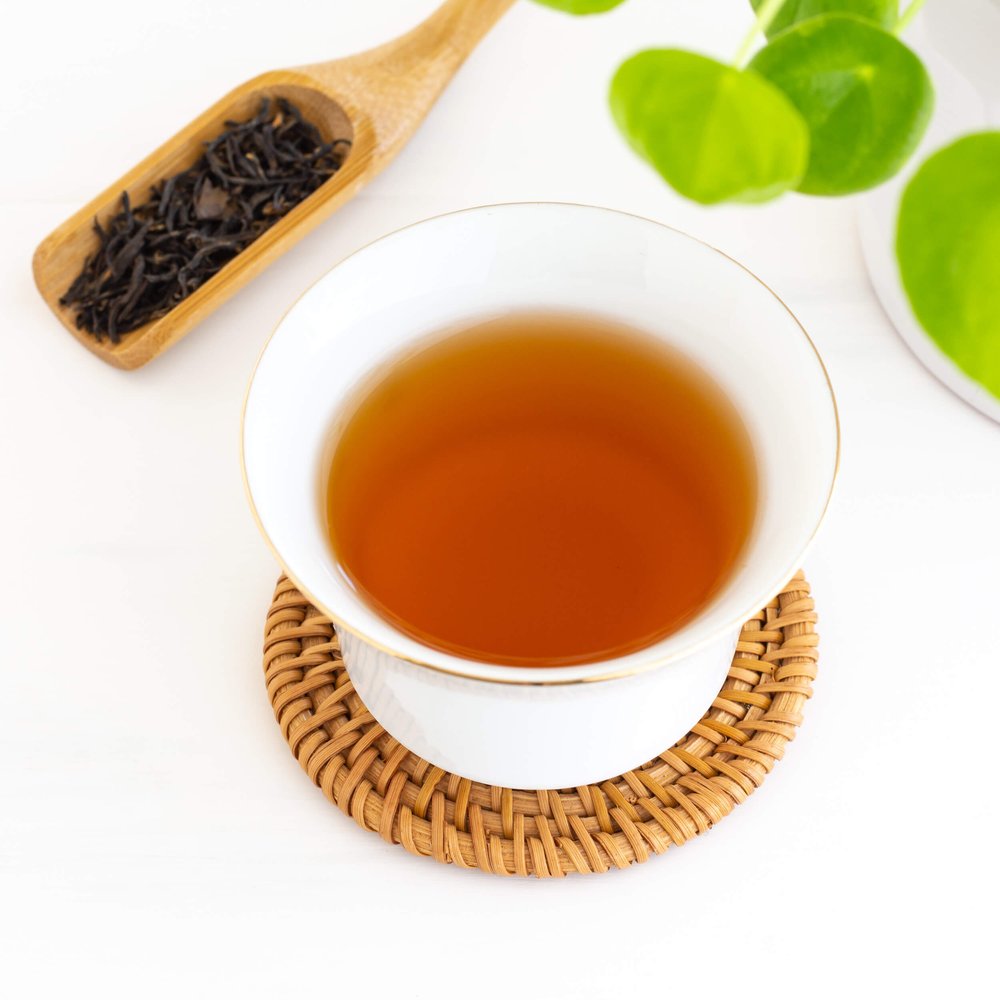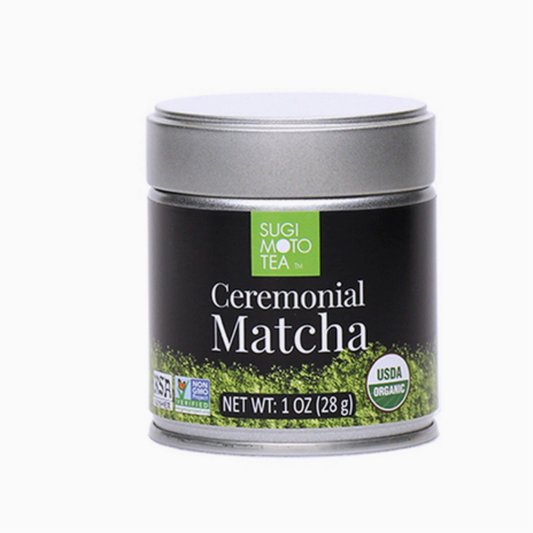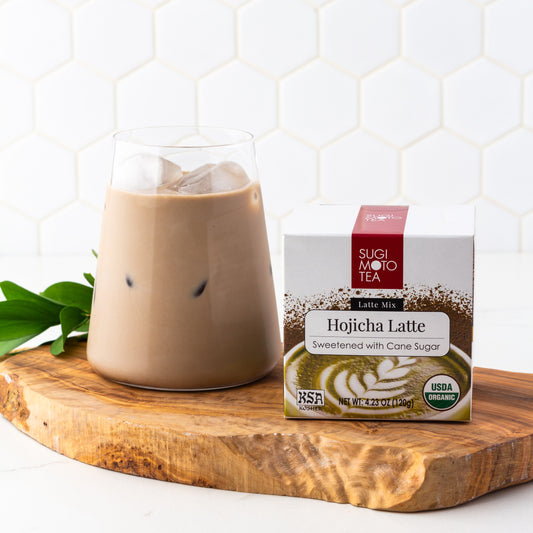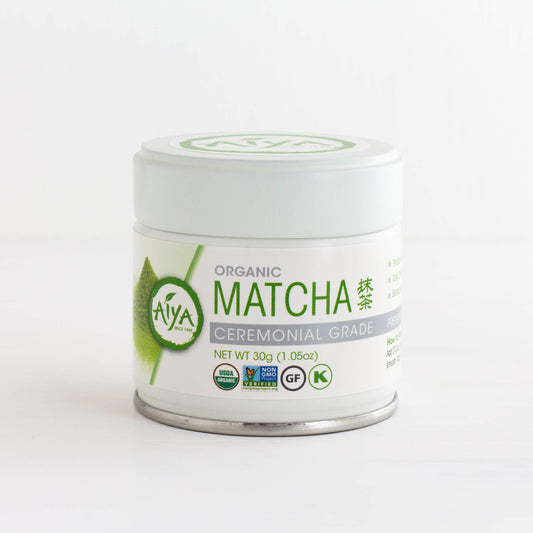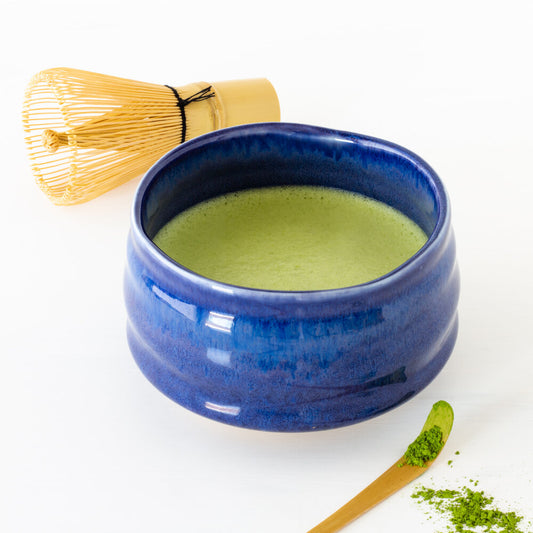Matcha can seem a little intimidating to make at home, but it's actually pretty simple! Master a few easy steps and you’ll be able to whip up delicious bowls of matcha whenever the urge strikes you. Our simple step-by-step guide to making matcha at home covers what type of matcha to use, what equipment you need, and how to prepare this unique type of tea.
How to make matcha at home
Matcha is fun and easy to make at home. The traditional way to prepare matcha involves tools including a matcha bowl, bamboo scoop, bamboo whisk, and metal sifter. That said, you can also prepare matcha using a DIY method based on what you have in your kitchen (more on that below).
What you’ll need
In order to prepare matcha using a traditional method, there are a few tools you’ll need to have on hand. These include:
- Ceremonial grade matcha: Ceremonial grade matcha is designed to be enjoyed on its own, with no extra flavors or sweeteners.
- Matcha bowl (chawan): These ceramic bowls are as beautiful as they are functional. You can whisk matcha in this bowl and then drink from it directly - no need for a second cup.
- Bamboo matcha whisk (chasen): Bamboo matcha whisks feature hand-carved strands that are designed to produce a maximum amount of froth.
- Bamboo matcha scoop (chashaku): Matcha scoops are used to transfer matcha powder to your bowl.
- Matcha sifter: A matcha sifter removes any clumps in the matcha powder, which helps create a smoother, creamier bowl of matcha.
Our matcha starter kit includes all of the above items, and is a great choice if you’re new to matcha.
1. Sift matcha into a bowl
The first step is to use your chashaku to scoop two scoops of matcha (approximately one teaspoon) into your matcha sifter, which rests over the matcha bowl. Sifting the matcha into the bowl prevents any clumps from forming. You can use the back of your matcha scoop to push the tea through the sifter.
2. Heat water
Heat cold, filtered water to approximately 175 degrees. The best way to heat water accurately is to use an electric kettle with a temperature control, but you can also heat water using a stovetop kettle until it is lightly steaming, but not boiling.
3. Pour a small amount of water over the matcha and whisk
Pour a small amount of water (about two ounces) from your kettle into the bowl, then whisk until the matcha and water are thoroughly combined.
4. Add more water and whisk until frothy
Add more hot water (about six ounces) and whisk until your matcha is nice and frothy. Rather than whisking in a circular pattern, you should whisk back and forth in an “M” or “W” shape for maximum froth.
5. Enjoy!
It can take a little practice to develop a nice, frothy bowl of matcha, so don’t be discouraged if your matcha isn’t picture-perfect the first time - it will still taste great, and you’ll get the hang of it after a few tries!
Many people eat small sweets alongside matcha, since these snacks complement the flavor of the tea. In a traditional Japanese tea ceremony, matcha is often enjoyed among friends.
How to make matcha without a whisk
While whisking is the traditional preparation method, it’s possible to make matcha without a whisk, although you likely won’t get your matcha as frothy without one. If you find yourself in the mood for matcha and don’t have a bamboo whisk on hand, here are some other strategies for mixing matcha powder with hot water:
- Kitchen whisk: If you don’t own a traditional bamboo whisk, a kitchen whisk is good substitute. This whisk won’t get your matcha quite as frothy, but it will do in a pinch.
- Milk frother: You can use an electric milk frother wand to make matcha. Just be sure to froth carefully to avoid damaging your matcha bowl.
- Blender: Blending matcha is another option if you find yourself without a whisk. Add matcha powder and hot water to a blender, then blend until smooth.
- Mason jar: Add matcha powder and hot water to a mason jar and shake until fully combined. This is also a handy method for making an iced matcha latte by replacing hot water with cold water or milk and ice.
- Blender bottle: A blender bottle is a great way to make matcha if you don’t have a whisk at home, since the ball in the bottle blends and aerates the tea.
What is matcha?
Matcha is a powdered tea made from shaded, stone-ground green tea leaves. It has a bright emerald green color and a rich, vegetal taste. Matcha originates from Japan, where a traditional Japanese tea ceremony is often used to prepare matcha. While our method of preparing matcha is based in some ways on the Japanese tea ceremony, the real ceremony involves many more steps, including a variety of ritualized motions and phrases as the tea is prepared.
Benefits of matcha
When you drink matcha, you’re actually consuming the whole tea leaf, rather than just an infusion of tea leaves. Because of this, matcha contains a concentrated amount of the many beneficial properties present in green tea. These include:
- High in EGCG
- Increases energy
- Lowers stress
- Boosts brainpower
- Good for your teeth
- Increases metabolism
- High in antioxidants
- Good for your heart
- Aids digestion
- Boosts the immune system
- Reduces inflammation
FAQs about matcha
What’s the difference between ceremonial and culinary grade matcha?
Ceremonial and culinary grade matcha are both made from powdered green tea, but there are are a few important differences. Ceremonial grade matcha is designed to be enjoyed on its own, and has a more nuanced flavor. Culinary grade matcha is designed to be used in smoothies, lattes, and baked goods, and has a bolder flavor that stands up well to the addition of other ingredients.
What’s the difference between matcha and green tea?
Matcha and green tea are both made from the camellia sinensis tea plant. Green tea leaves are either steamed or pan fired to halt the oxidation process, then dried, shaped, and packaged. The tea leaves used to make matcha are steamed and then stone-ground into a fine powder.
Does matcha have caffeine?
Matcha is high in caffeine. Because you’re consuming the whole tea leaf when you drink matcha, it’s much higher in caffeine than regular green tea. However, matcha also contains l-theanine, which mitigates some of the effects of caffeine and has a calming, stress-reducing effect.
What does matcha taste like?
People who’ve never had this tea before often wonder exactly what matcha tastes like. With a bright green color and strong, nuanced flavor, matcha isn’t quite like anything else. It has a bright, vegetal, and slightly bitter taste, with notes of sweetness and umami.
